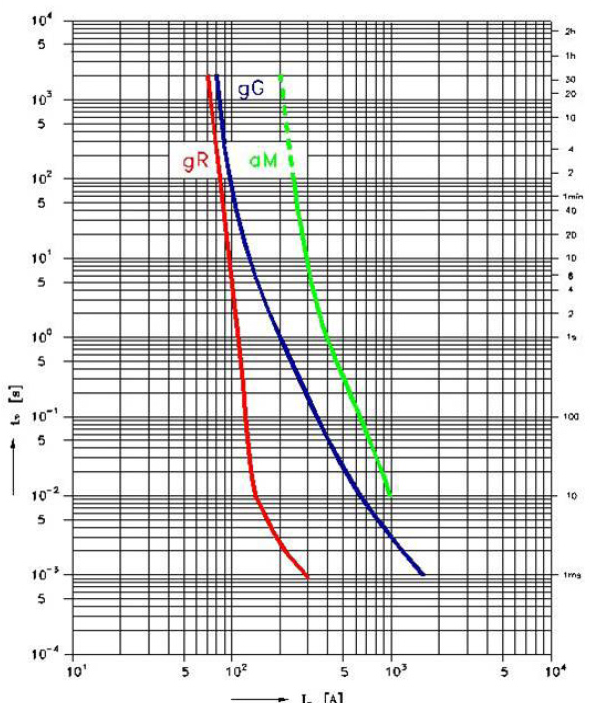Hi,
currently, I'm thinking about fuses in the Victron system and I'm still unable to find the answer. The question is about fusing 5kVA Multiplus and Bluesolar 150/45. I will start with MPPT but the answer is the same.
The stated MPPT has specified fuse rating in a range of 50A to 63A as per documentation. I'm not talking about fuse voltage rating, breaking capability etc. those are obvious things. My question is what type of fuse should be used because I couldn't find anything in official Victron documentation. And to the answer is tied to the question of for what are we really fusing.
The MPPT can produce 45A so the 50A fuse of any kind won't blow. So we aren't fusing the MPPT in a sense of protecting the load (batteries) from overcurrent. The only scenario I expect the MPPT to produce higher current is in a case of severe failure and in that case, there is something wrong with the MPPT. The same can be said about fusing "from the other side". If we are fusing against some kind of short circuit in MPPT there is again something wrong with the MPPT.
Why I'm saying this? Because it will directly lead to the selection of fuse type. If we are fusing only for the short circuit scenarios in case something goes really wrong we can use slower fuses. Basically what I'm getting at is that maybe a type gG fuse is enough for fusing MPPT and we don't need to use faster-acting fuses because the only time they will get blown will be a short circuit scenario, not an overload. The other variant is to use aR or gR fuses intended for fusing semiconductors. Those fuses aren't cheap, especially with multiple MPPTs (at minimum 10x the price of gG), have bigger losses and I was told they age and someday they will most likely just blow because of the derating by the age and use. Blowing the fuse at the output of MPPT under operation isn't really something I want because I want my MPPTs to stay alive. Is there any recommended type of fuse? If I remember correctly the Lynx system uses midi fuses which is a slow-blow type of fuse.
So in short: Is the only case we are fusing for the short circuit scenario? In that case is the slow blow fuse with a lower limiting factor still okay because in that case there is something really wrong with MPPT and the fuse is used mainly to stop setting the MPPT on fire etc. not to protect it because, in a case of internal failure resulting in short circuit, there is already something wrong. Also in Victron manuals, there is only a fuse drawn on positive wires. So does Victron officially recommend using fuses on only one pole?

